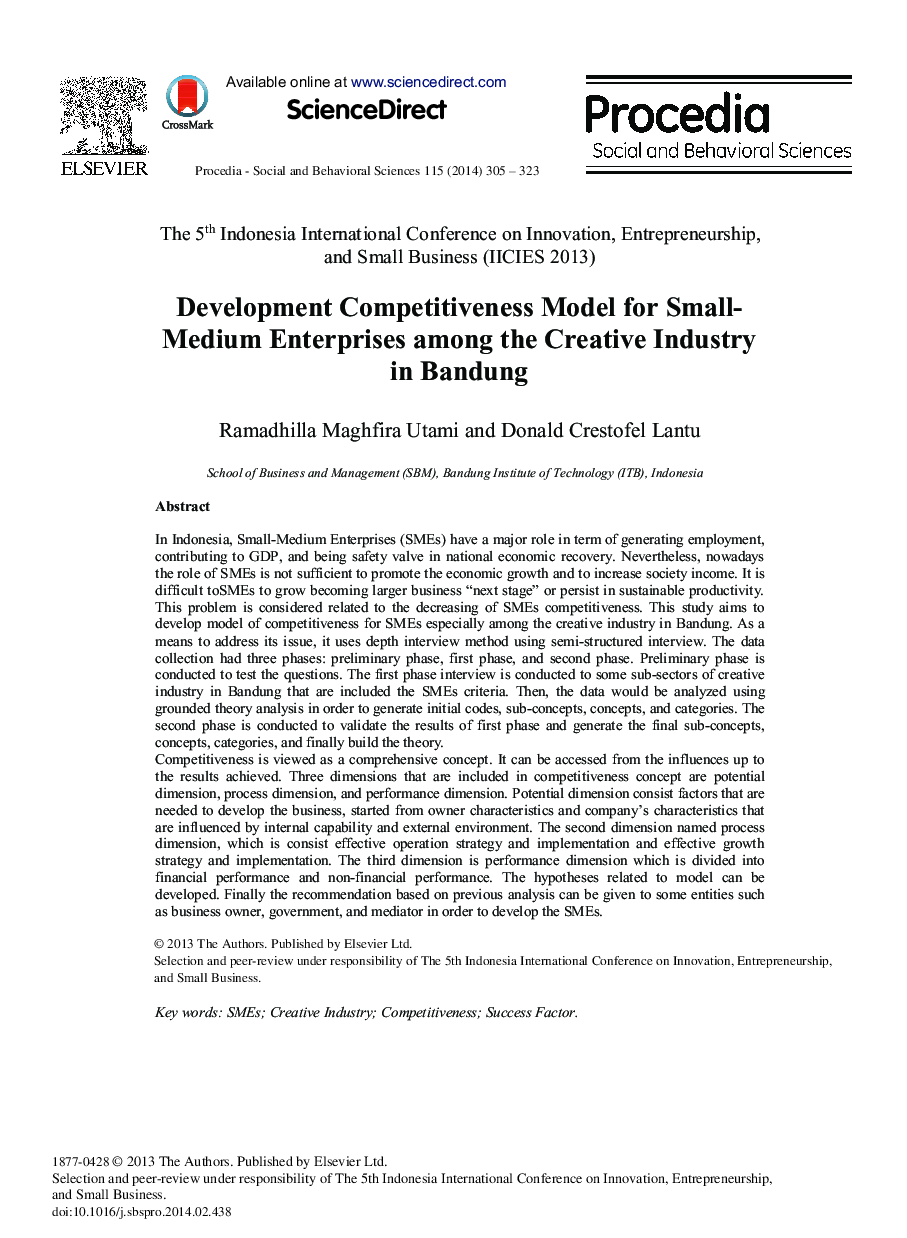| Article ID | Journal | Published Year | Pages | File Type |
|---|---|---|---|---|
| 1114830 | Procedia - Social and Behavioral Sciences | 2014 | 19 Pages |
In Indonesia, Small-Medium Enterprises (SMEs) have a major role in term of generating employment, contributing to GDP, and being safety valve in national economic recovery. Nevertheless, nowadays the role of SMEs is not sufficient to promote the economic growth and to increase society income. It is difficult toSMEs to grow becoming larger business “next stage” or persist in sustainable productivity. This problem is considered related to the decreasing of SMEs competitiveness. This study aims to develop model of competitiveness for SMEs especially among the creative industry in Bandung. As a means to address its issue, it uses depth interview method using semi-structured interview. The data collection had three phases: preliminary phase, first phase, and second phase. Preliminary phase is conducted to test the questions. The first phase interview is conducted to some sub-sectors of creative industry in Bandung that are included the SMEs criteria. Then, the data would be analyzed using grounded theory analysis in order to generate initial codes, sub-concepts, concepts, and categories. The second phase is conducted to validate the results of first phase and generate the final sub-concepts, concepts, categories, and finally build the theory.Competitiveness is viewed as a comprehensive concept. It can be accessed from the influences up to the results achieved. Three dimensions that are included in competitiveness concept are potential dimension, process dimension, and performance dimension. Potential dimension consist factors that are needed to develop the business, started from owner characteristics and company's characteristics that are influenced by internal capability and external environment. The second dimension named process dimension, which is consist effective operation strategy and implementation and effective growth strategy and implementation. The third dimension is performance dimension which is divided into financial performance and non-financial performance. The hypotheses related to model can be developed. Finally the recommendation based on previous analysis can be given to some entities such as business owner, government, and mediator in order to develop the SMEs.
